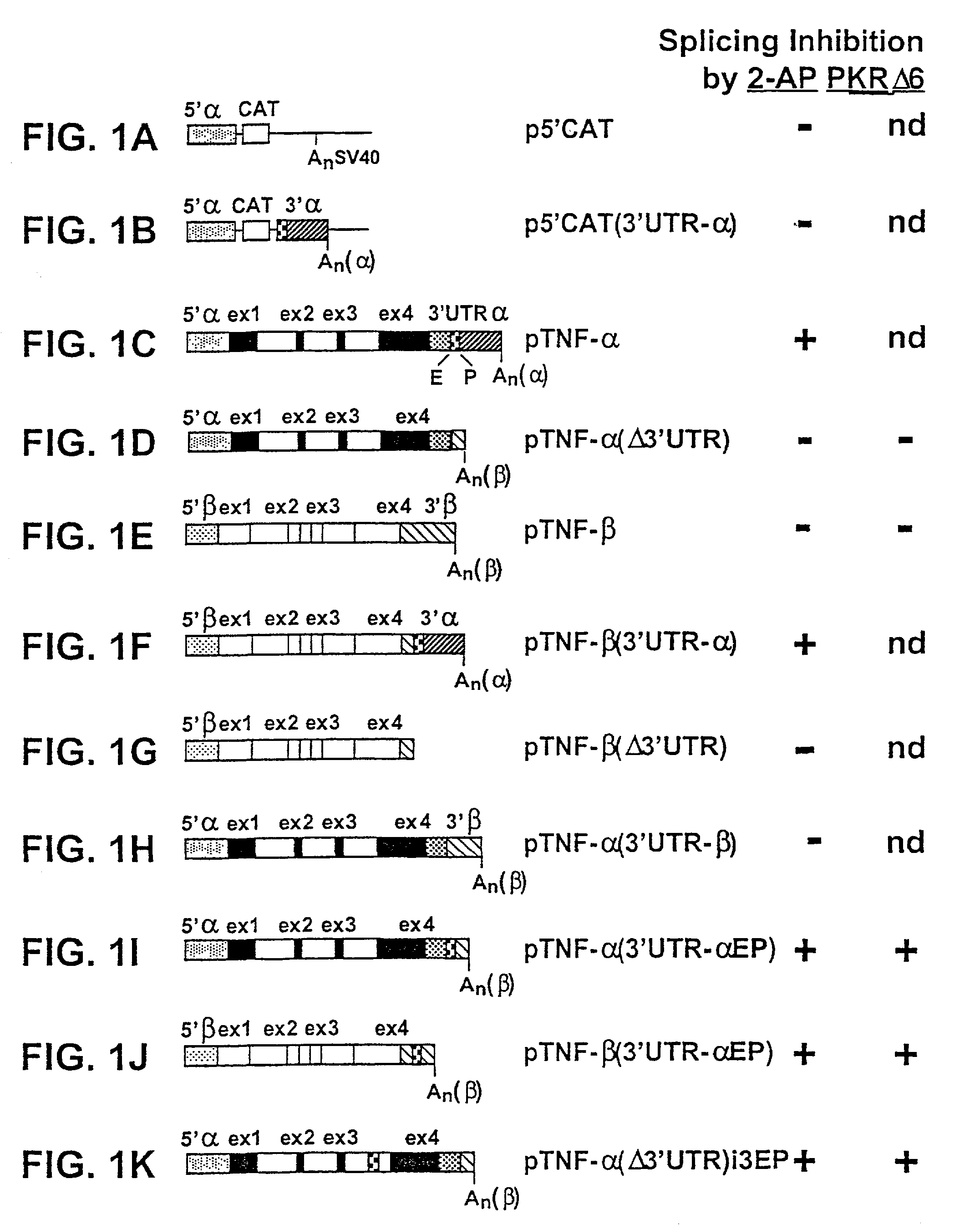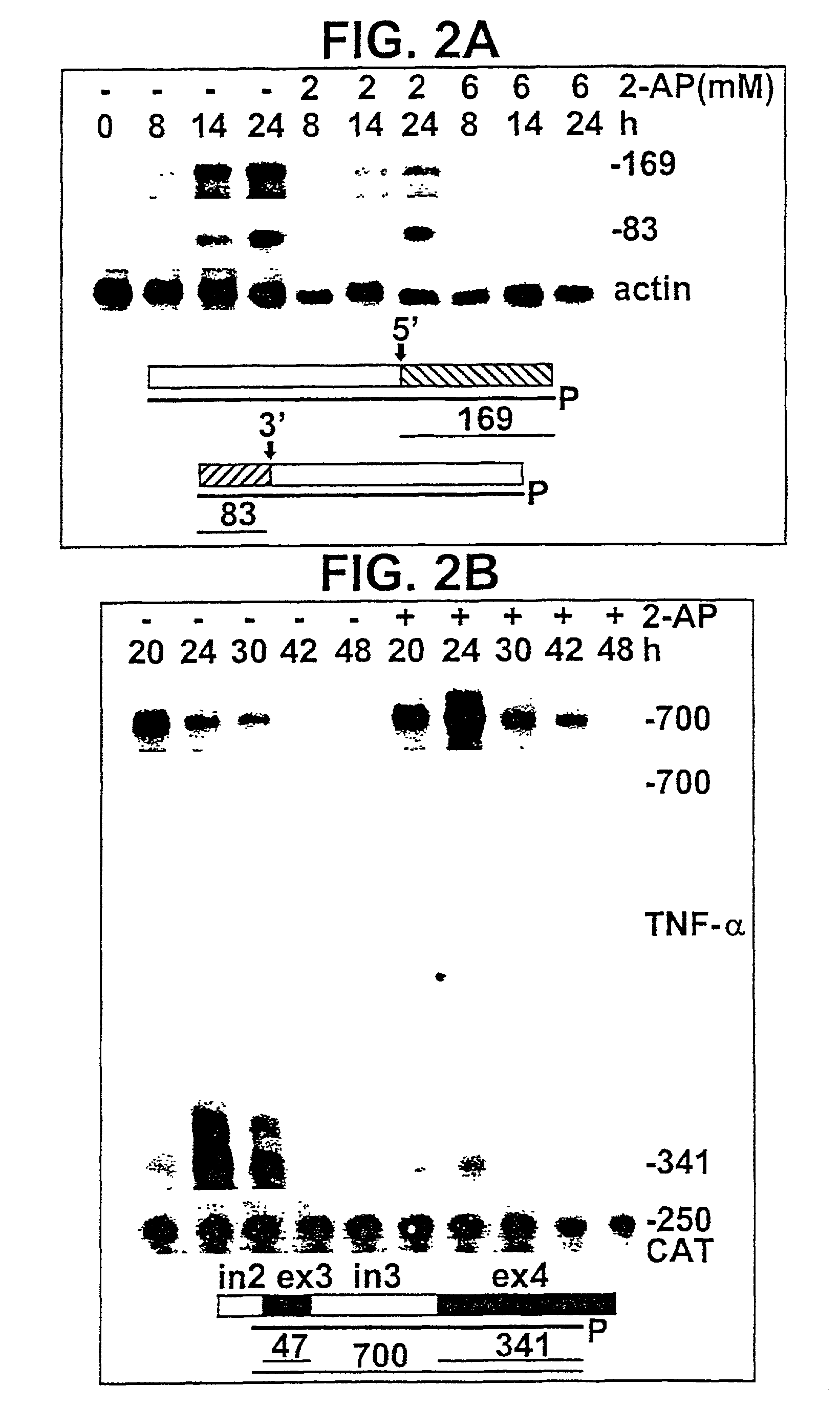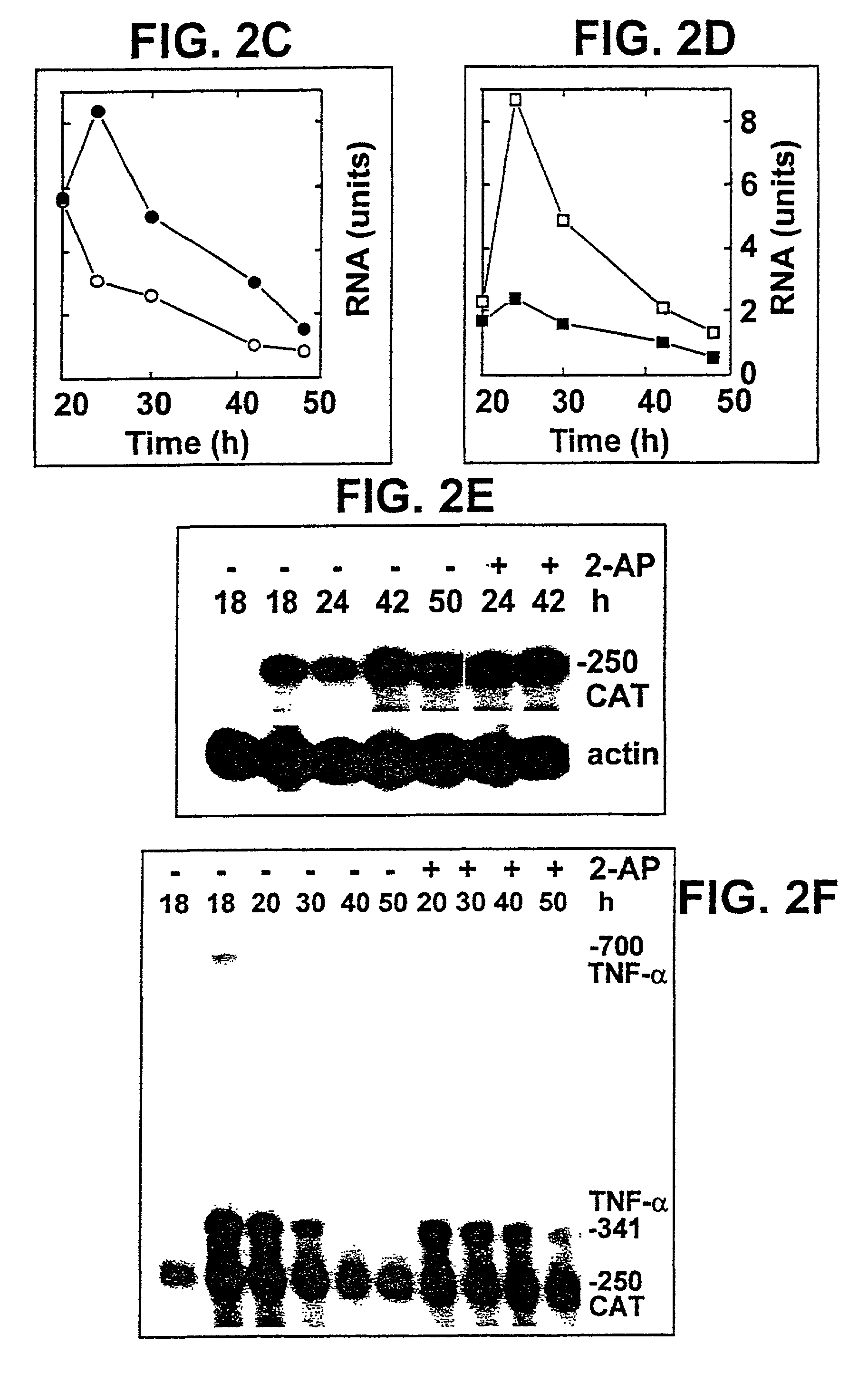Regulation of gene expression through manipulation of mRNA splicing and its uses
- Summary
- Abstract
- Description
- Claims
- Application Information
AI Technical Summary
Benefits of technology
Problems solved by technology
Method used
Image
Examples
example 1
2-AP Inhibits Splicing of TNF-α Precursor Transcripts in Transfected Cells
[0096]BHK-21 cells were transfected with an intact human TNF-α gene (pTNF-α; FIG. 1C). Transient expression of TNF-α RNA transcripts was monitored by RNase protection analysis using probes complementary to adjacent portions of TNF-α5′ flank and exon 1, in which 169 nt are protected by correctly initiated RNA, or of TNF-α3′-UTR and downstream sequences, in which 83 nt are protected by RNA with a correct 3′ end (FIG. 2A). Endogenous hamster TNF-α mRNA was not detected by these probes. Expression of TNF-α RNA transcripts was sensitive to 2-AP in the culture medium, which led to a reduction at 2 mM and full inhibition at 6 mM. RNA transcripts with authentic 5′ or 3′ ends were expressed concomitantly and inhibited to the same extent by 2-AP. Hence, premature termination of transcription, which could affect processing of precursor RNA [50], is not the basis for the observed inhibition.
[0097]2-AP inhibits splicing of...
example 2
3′-UTR Sequences Are Required for Inhibition of TNF-α mRNA Splicing by 2-AP
[0098]To examine whether TNF-α gene promoter or 5′-UTR sequences respond to 2-AP, cells were transfected with p5′CAT, in which 821 bp from the TNF-α gene, comprising 652 bp preceding the transcription start site, the 5′-UTR and the first 6 codons of the open reading frame are abutted to the CAT gene (p5′CAT, FIG. 1A). Expression of CAT mRNA proceeded unabated at 10 mM 2-AP (FIG. 2E), a concentration that inhibited expression of TNF-α mRNA from pTNF-α (FIG. 2B). Sequences mediating the response to 2-AP thus map downstream from the TNF-α 5′-UTR.
[0099]In FIG. 2F, BHK-21 cells were transfected with pTNF-α(Δ3′UTR) which lacks 573 terminal bp of the 792-bp 3′-UTR and the 3′-end processing signal (FIG. 1D). Expression of precursor transcripts and mRNA was abundant and as transient as for the complete gene (FIG. 2B), yet expression of mRNA was no longer inhibited by 2-AP, nor was there any enhanced accumulation of pr...
example 3
2-AP Does Not Inhibit TNF-β Gene Expression at Splicing
[0101]In lymphoid cells, increasing doses of 2-AP led to a coordinate decline in TNF-β precursor transcripts and spliced mRNA, supporting an inhibition at transcription rather than at splicing [13]. The entire human TNF-β gene (pTNF-β, FIG. 1E) was transfected and expression of TNF-β RNA was monitored with an antisense RNA probe covering adjacent segments of intron 3 and exon 4 (FIG. 3A). Unspliced precursor transcripts (637-nt protected fragment) were expressed transiently in large amounts while expression of TNF-β mRNA (571 nt) was to lower levels. This ratio attests to slow excision of intron 3 from human TNF-β precursor transcripts in BHK-21 cells. Addition of 2-AP did not elicit any increase in TNF-β precursor transcripts; instead, precursors and mRNA both declined.
[0102]The antisense RNA probe used in FIG. 3B overlaps TNF-β exons 1–3 and part of intron 3. Precursor transcripts protect 169 nt while partially spliced precurs...
PUM
| Property | Measurement | Unit |
|---|---|---|
| Composition | aaaaa | aaaaa |
| Cell angle | aaaaa | aaaaa |
| Gene expression profile | aaaaa | aaaaa |
Abstract
Description
Claims
Application Information
 Login to View More
Login to View More - R&D
- Intellectual Property
- Life Sciences
- Materials
- Tech Scout
- Unparalleled Data Quality
- Higher Quality Content
- 60% Fewer Hallucinations
Browse by: Latest US Patents, China's latest patents, Technical Efficacy Thesaurus, Application Domain, Technology Topic, Popular Technical Reports.
© 2025 PatSnap. All rights reserved.Legal|Privacy policy|Modern Slavery Act Transparency Statement|Sitemap|About US| Contact US: help@patsnap.com



